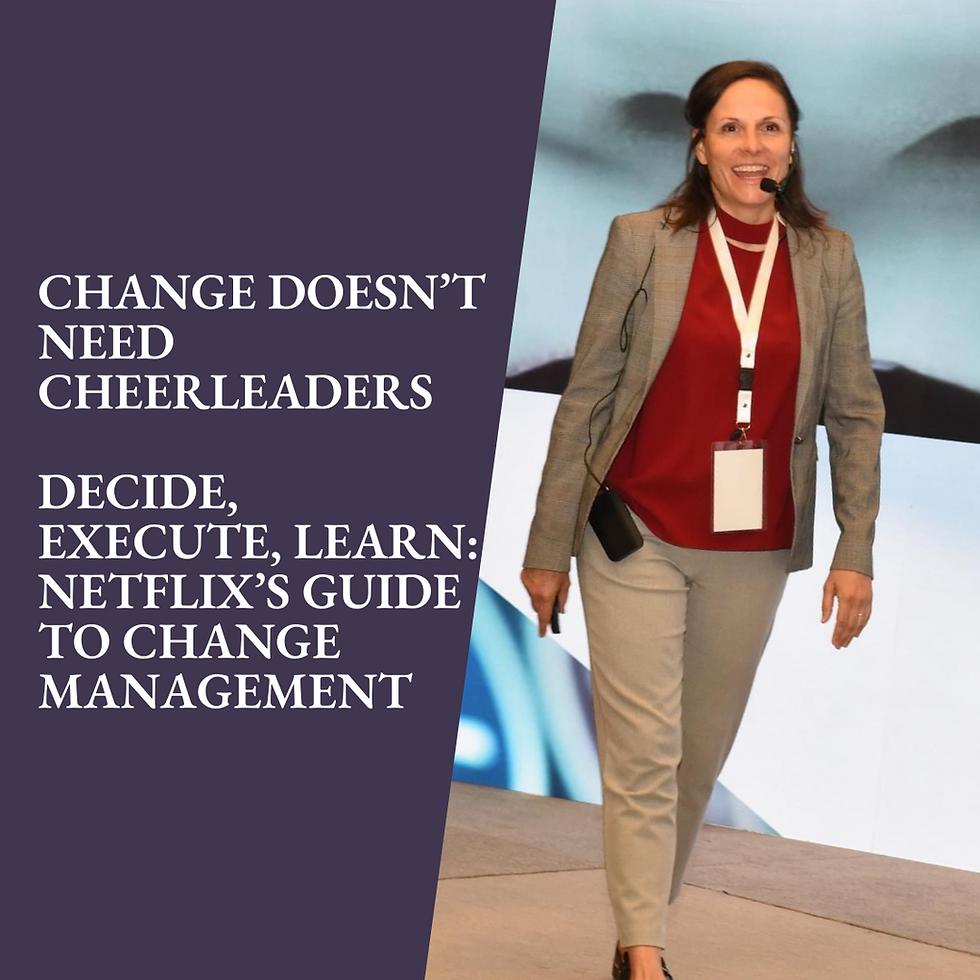Leadership, D&I, Feedback, and Company Purpose Aren't the Priority to the Workforce.
- Szilvia Olah

- Mar 18, 2023
- 3 min read
As Jordan B. Peterson says, "The solution to your problem is where you the least want to look." We hide away from problems and don't want to look at them because then we need to face them and take action. Instead, we go down the path of collective illusion and ignore our personal views. This is easier.
Collective illusion refers to a phenomenon where a group of individuals believes in something that is not objectively true. This phenomenon is widespread in society and can manifest in various forms, including mass hysteria, urban legends, conspiracy theories, and cultural myths. Collective illusions can be benign, but they can also have detrimental effects on individuals and society as a whole.
One of the most famous examples of collective illusion is the Salem Witch Trials of 1692. A group of young girls in Salem, Massachusetts, claimed that they were possessed by witches and accused many people in the town of being witches. The hysteria spread quickly; over 200 people were accused of witchcraft, and 20 were executed. Superstition, religious beliefs, and social tensions in the town fueled the hysteria. Only years later, the community realised the absurdity of the accusations and the tragic consequences of their collective illusion.
So, what kind of collective illusions are we suffering from at the workplace?
Using private opinion methods can reveal our collective illusions. It would help organisations take action on issues that matter to the employees. Unfortunately, it seems that we are all misled and going after the agenda created at the top level to avoid addressing the real needs of employees.
We are all told that leadership, diversity, company purpose, snacks and perks, feedback, and prestigious jobs are the most important things for employees. You can even see how these elements are at the forefront of EVP statements and company organisational agendas. Yet, none of them is done wholeheartedly and properly.
Leadership has been a mess for decades, D&I activities are just marketing campaigns without substance (see the actions of last women's day celebrations), and people management practices haven't changed for decades despite the demographics and their needs have and so on.
So one should ask WHY? because companies know these things are not on the employee priority list. That is why.
According to The American Workforce Index by Populace, those things are at the bottom of employees' priority lists.
The organisation has a clear, compelling purpose (46th place out of 60)
The organisation provides some free meals and snacks, gear, and other perks (47th place out of 60)
I receive feedback that helps me improve (50th place out of 60)
My job is recognised as prestigious (55th place out of 60)
The organisation takes steps to increase the representation from minorities (56th place out of 60)
The organisation's leadership takes strong positions on current events (57th place out of 60)
As you can see, these are at the bottom of the priority list that companies symbolically spend their time on instead of tucking into the top of employees' priorities. What are those?
I am well compensated (1st place out of 60)
I can work remotely or in a hybrid home/ workplace arrangement (2nd place out of 60)
I have good benefits (3rd place out of 60)
I can do my work while still having time for other things I care about (4th place out of 60)
I can plan around my work schedule (5th place out of 60)
The organisation respects the privacy of employees' personal lives (10th place out of 60)
What is the striking thing one can immediately see from this list? It is all about the employees, not the organisation or its leadership! BANG, it seems we are more interested in ourselves than anything else. And there is nothing wrong with it!
This misalignment of priorities has been the root cause of employee dissatisfaction for decades, yet, we choose to ignore them. Why? Because companies speak the "us" language, whilst employees speak the "I" language. Companies want employees to completely surrender to their vision, mission, and priorities and dedicate their time to the company. These are the conflict of interest that we face, but they cannot be revealed until we approach organisational challenges by including employees' private opinions. This is where the solution lies, not in the collective illusions that we are all led to believe are true.
In conclusion, collective illusions are pervasive in society and the workplace. It is essential to be critical and sceptical of information and beliefs not supported by evidence and promote rational thinking and open-mindedness. By doing so, we can avoid falling prey to collective illusions and make informed decisions that benefit ourselves and society as a whole.

.png)



Comments